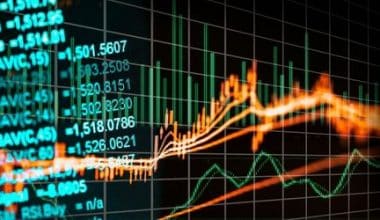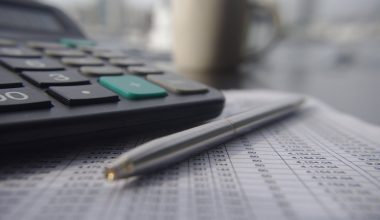More than past achievements on the best ETFs, it’s crucial to know that they do not guarantee the same or greater results in the future. But in the meantime, this covers some of the best ETFs to look out for in 2023 as a whole. Sit tight and explore!
What are ETFs?
Exchange-traded funds (ETFs) enable investors to buy a variety of stocks or alternative securities in only one fund with (typically) modest charges, and they trade on a marketplace like stocks.
Good ETFs to Buy Now in 2023
Here are the good ETFs to buy now in 2023.
#1. Vanguard S&P 500 ETF
The Vanguard S&P 500 ETF introduces you to the 500 largely U.S.-headquartered corporations selling on leading American stock markets. The S&P 500 is a market, as individuals frequently call it. Meanwhile, it’s important to keep in mind that this isn’t a fund that provides equal exposure to each of the market’s sectors. Currently, technology companies comprise about 30% of the fund’s holdings, compared to less than 3% each for utilities, property investment, materials, and energy. As the economy of the United States changes, so does the S&P 500.
#2. Pacer US Small Cap Cash Cows 100 ETFs
The Pacer US Small Cap Cash Cows 100’s recent holdings aren’t what you might anticipate from a value fund. Slightly more than 40 percent of the ETF’s weight is in user discretionary companies; industrial companies and technology are the two major double-digit weights, each at roughly 12 percent.
CALF is one of the few low-cost ETFs that is also well-regarded by fund analysts. Independent research group CFRA ranks Pacer’s ETF as one of its top-scoring small-cap equity ETFs, with a Morningstar rating of 5 stars.
#3. The Industrial Select Sector SPDR Fund
Manufacturing, construction, and a wide range of transportation sectors are just a few examples of the sectors represented by industrial stocks, which often perform well when economies are growing and when inflation is high.
#4. Vanguard Energy ETF
Although technology is exploding with enticing ETF possibilities, investors have less tempting alternatives in the energy (power) industry. Moreover, it’s a simple industry fund like XLI’s Vanguard Energy ETF (VDE, $94.18). With the exception of XLI, though, VDE is more than the S&P 500’s large caps, whereas the 104-holding fund is still strong in large businesses (52 percent ). Another 36 percent of assets are in mid-cap stocks and the remaining is in smalls.
#5. ETF for Regional Banking SPDR S&P
Mortgages and vehicle loans, in particular, benefit greatly from a stronger economy. And higher interest rates enable financial institutions to enjoy higher spreads between what they borrow and what they lend, padding their bottom line.
QUAL’s quality-factor measurements are applied to the holdings of IQLT ($37.57), an exchange-traded fund that offers diversified exposure to developed markets in Europe, Japan, and elsewhere. The advanced Europe portion of the 300-stock portfolio accounts for a portion of the portfolio’s weight. And that’s before taking into account the portfolio’s extra 14% exposure to the United Kingdom. Japan represents another 14 percent of assets, and the balance of the portfolio is distributed throughout Canada, Australasia, and advanced Asia.
How to Invest in ETFs
It’s fairly straightforward to invest in ETFs, and this aspect keeps them appealing to investors. You can purchase and sell them on an exchange like a conventional stock. Investing in an ETF is as simple as the following:
#1. Discover the ETF you wish to buy.
You have a variety of over 2,000 ETFs trading in the U.S., so you need to comb through the funds to pick which one you wish to buy. One alternative is to invest in an index fund focused on the S&P 500, which includes the most highly valued U.S.-listed stocks on the stock exchange. Moreover, it’s the suggestion of great investor Warren Buffett. The risk of your investment can be reduced but not eliminated by investing in other wide-ranging index funds. Many businesses offer identical index funds, so evaluate the expected cost of each to discover which one provides the best bargain.
#2. Calculate the amount you can Invest
Now calculate the amount you’re prepared to finance in the ETF. You might be able to put up a certain amount of money in the market right now. However, how much you can invest may also depend on the value of the ETF.
An ETF’s share price can range from $10 to $15, or even up to several hundred dollars. Orders must be placed for a minimum of one entire share. However, regardless of the ETF’s pricing, if you pick a broker that accepts fractional shares, you can invest any amount of money. There is also no trading commission charged by these brokers in many circumstances.
Over decades, wealth is developed, so it’s crucial to continue to contribute funds to the market over time. But you should likewise decide the amount you can add to the market frequently over time.
#3. Place the order with your Broker
Make a purchase with your broker at this point. If you have cash available already, you can execute the transaction by utilizing the ETF’s ticker symbol. But, if not, transfer funds into the account and then execute the trade whenever the funds settle. If you don’t already have one, it typically only takes a few minutes to open a brokerage account. A couple of providers enable you to rapidly fill your account. As a result, you may be able to begin trading in as little as a few minutes in some situations.
#4. Protect yourself from inflation with ETFs
When prices rise steadily over time, you lose some of your purchasing power because of inflation. Because of the rush to spend that has occurred since the COVID-19 closure was lifted, numerous products and services are now more expensive. Investing in assets that grow at a rate greater than inflation is the best way to guard against it. And one approach to doing it is to truly own the firms—or shares in them—that profit from inflation.
In many cases, the winner is a high-quality company that can pass on the increased costs to customers. To reap the rewards of a rising stock price, you must possess a position in the company, either through individual shares or an exchange-traded fund (ETF). So, buying stock can be a way to shield yourself from inflation.
When it comes to inflation-hedging ETFs, investors have plenty of options. The S&P 500 and Nasdaq 100 Index ETFs, both of which feature high-quality companies traded on American exchanges, are two of the top famous ETFs.
- S&P 500 ETF (VOO) from Vanguard with a 0.03 percent cost ratio
- Invesco QQQ Trust (QQQ), has an expected cost of 0.20 percent
These are both minimal-cost funds that provide you with shares in some of the world’s top businesses, helping shield you against inflation.
Best ETFs to Buy In 2023
The following are some of the best good ETFs in 2023 that you can buy now.
#1. Top equity ETFs
Equity ETFs are one of the good ETFs to buy in 2023. They offer access to a portfolio of publicly-traded equities and may be separated into numerous groups according to where the stock is listed, the size of the firm, whether it pays a dividend, or what industry it’s in. As a result, investors have the option of narrowing their search to only include stocks that fulfill a specific set of criteria.
Stock ETFs appear to be more unpredictable than other forms of investments, such as CDs or bonds, but they’re excellent for long-term investors aiming to grow their income.
#3. Municipal bond ETFs
This sort of bond ETF offers the opportunity to invest in bonds issued by governments and localities, and the revenue on these bonds is normally tax-free, but it’s smaller than that paid by other issuers. Muni bonds are generally considered one of the healthiest parts of the bond market, yet if you own out-of-state munis in a fund, you would forfeit the tax advantages in your native state, but not at the federal level. The tax benefits of investing in a municipal bond ETF in your own state outweigh the disadvantages.
#4. Dividend ETFs
This form of ETF allows investors a method to acquire just stocks that yield a dividend. A dividend ETF is normally passive in management, implying it systematically monitors an index of dividend-paying corporations. A diversified income ETF like this one is more predictable than a broad market index ETF and may be appealing to seniors looking for a steady stream of income.
#5. Total bond market ETFs
Investors can have exposure to a wide range of bonds, all of which are diverse in terms of type, issuer, maturity, and geography. A whole bond market exchange-traded fund (ETF) is a good way to diversify a stock-heavy portfolio by gaining wide exposure to bonds while not pushing too far in one area.
#6. Top bond ETFs
Investing in a bond ETF gives you access to a diversified portfolio of bonds, many of which are subdivided into subsectors based on the type of bond, the issuer, the duration, and other variables. Bonds pay out interest on a timetable, and the ETF distributes this income to holders. Retirees, for example, may find bond ETFs an appealing investment because of their desire for a steady stream of income.
Are ETFs More Secure Than Stocks?
A fund is frequently safer to own than a single stock because of the benefits of diversification that ETFs offer, including lower risk and less volatility.
How Long Should You Hold ETFs?
The gain is a short-term capital gain if you have held ETF shares for less than a year. Long-term capital gain results from holding ETF shares for a period of time longer than a year.
How Many ETFs Should I Own?
In terms of diversification, experts concur that for the majority of individual investors, a portfolio made up of 5–10 ETFs is ideal.
Do ETFs Have Long-term Value?
It is the ideal long-term investment because it offers investors a significant chance of investment growth.
Are Dividends Paid by ETFs?
Any dividends that ETFs receive for shares held in the fund must be paid to the investors who purchased the ETF. They have two options for payment: cash or more ETF shares. Therefore, ETFs distribute dividends if any of the equities held by the fund do.
Is It Smart to Just Invest in ETFs?
ETFs are a fantastic place to start because they provide built-in diversity and don’t need a lot of capital to invest in a variety of stocks. They can be traded similarly to stocks, and you can benefit from a diversified portfolio.
Can ETFs Help You Reach Financial Success?
You can achieve your goal of becoming a millionaire by the time you retire if you invest in ETFs, so don’t worry about that. Some claim that an ETF strategy increases your chances of retiring wealthy compared to just investing in stocks.
Conclusion
Exchange-traded funds (ETFs) enable investors to buy a variety of stocks or alternative securities in only one fund with (typically) modest charges, and they trade on a marketplace like stocks.
GOOD ETFS TO BUY FAQs
Are ETFs good for beginners?
Yes!. Investing in exchange-traded funds (ETFs) is great for novice investors because of their low expense ratios, a wide range of investment options, low investment threshold, and ability to diversify.
What is the most successful ETF?
- Vanguard S&P 500 ETF (VOO)
- Vanguard FTSE Developed Markets ETF (VEA)
- Vanguard Information Technology ETF (VGT)
- Vanguard Dividend Appreciation ETF (VIG)
- iShares MBS ETF (MBB)
- Vanguard Short-Term Bond ETF (BSV)
- Vanguard Total Bond Market ETF (BND)
- iShares National Muni Bond ETF (MUB)
Do ETF pay dividends?
Of course! Investors in ETFs are eligible for any dividends they earn from the fund’s holdings. They have the option of paying in cash or by purchasing additional ETF shares. As a result, if any of the stocks in the fund pay dividends, ETFs will pay dividends.






